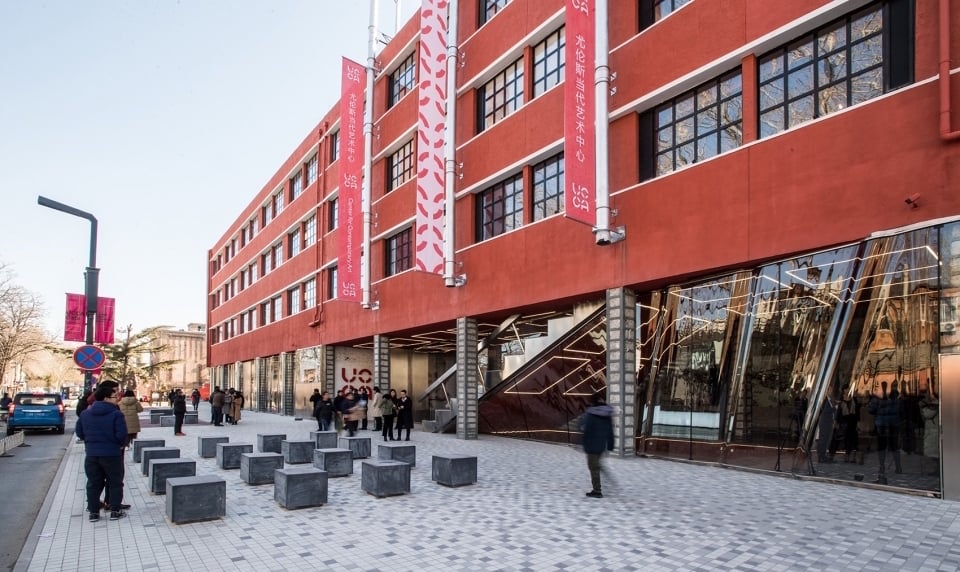
After a two-month closure, the Ullens Center for Contemporary Art in Beijing’s 798 Arts District is unveiling several vast structural improvements, including a new facade, entrance, lobby, galleries, children’s educational space, store, and cafe.
The redesign was the work of the Dutch firm OMA, co-founded by Rem Koolhaas, and is its second architectural project in China.
“We aimed to solve a problem that had been with us since UCCA’s founding,” director Philip Tinari told artnet News. “The center, for all its public reach and impact, did not have a proper street presence. Indeed some people even struggled to find the entrance.”
The so-called “slab” at the front of the building has been refaced with bright red stucco and gridded black windows. The ground floor walls were demolished, leaving only supporting columns. “The building appears to float above the surrounding street, as if suspended atop the glass facade that elegantly curves and folds around the columns,” according to a statement on the redesign.
Inside the revamped UCCA in Beijing. Image courtesy of Office for Metropolian Architecture, photo by Bian Jie.
The center has had its share of ups and downs over the years. The space was initially founded in 2007 by mega-collectors Guy and Myriam Ullens, who put the institution up for sale in late 2016. After a year of uncertainty, a group of prominent Chinese investors bought it and turned it into a nonprofit helmed by Tinari.
The center reopened in mid-January with exhibitions by Qiu Zhijie and Yu Honglei, though Tinari says it is continuing to complete phases of the renovation throughout the year, including the interiors of the cafe and store, and outdoor landscape elements.
One change addresses the visitor’s path through the galleries, which was not always clear. “This regeneration creates a single, coherent facade, while also connecting our gallery and programming spaces in a generous and intuitive way,” the center says.
As a result, Tinary says there has been a “drastic increase” in attendance and membership. “Our building now tries actively to bring visitors through the front door and into the exhibitions. It will be exciting to see how this impacts visitors’ experience of major shows that we will mount later this year.”
Those include “Picasso: Birth of a Genius,” opening June 15, and “Matthew Barney: Redoubt,” opening September 28.
“The major impetus for this regeneration was to expand our visibility and capacity for audiences,” Tinari said, “and we believe that to our growing public, UCCA now looks and feels like an institution you would want to be part of.”